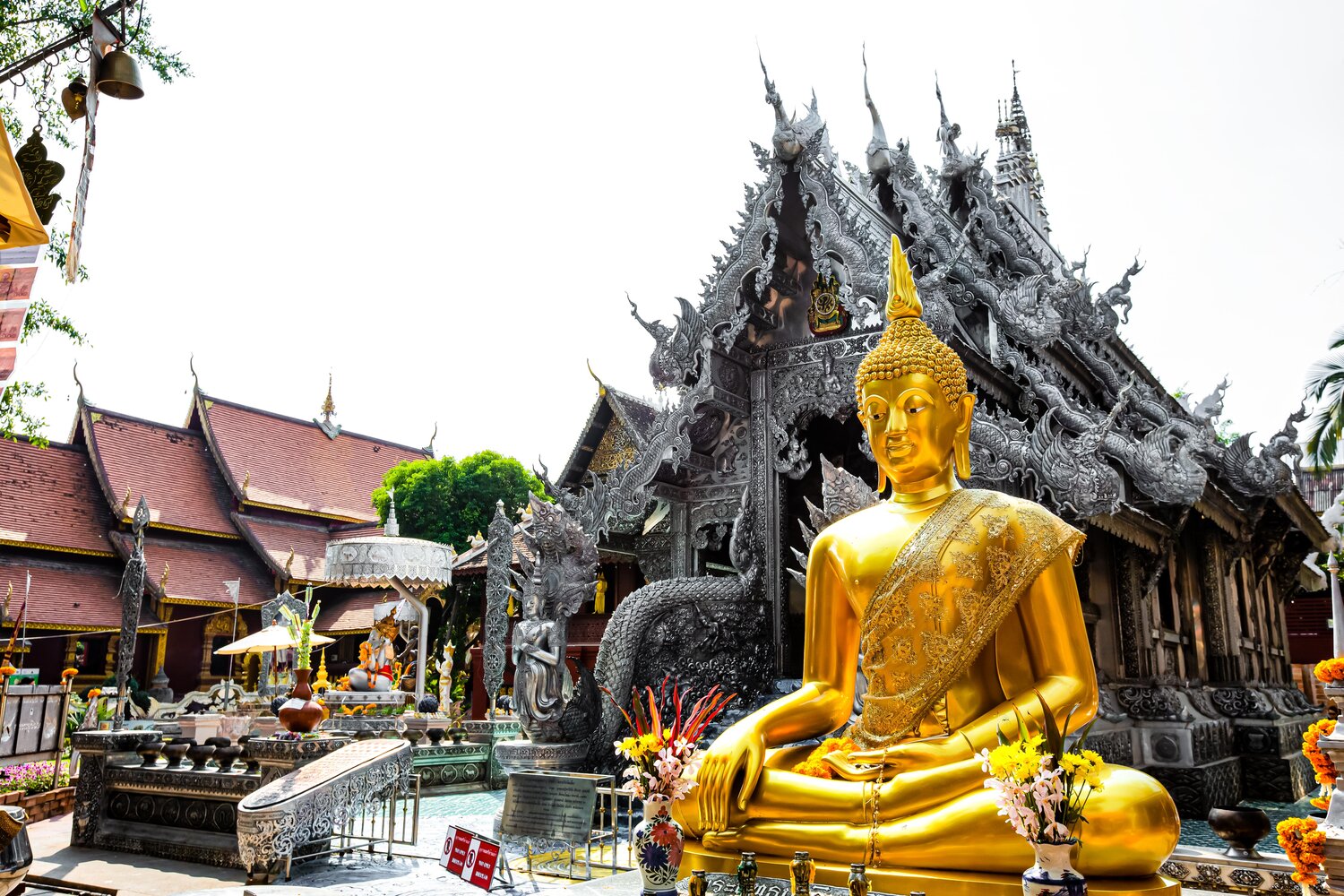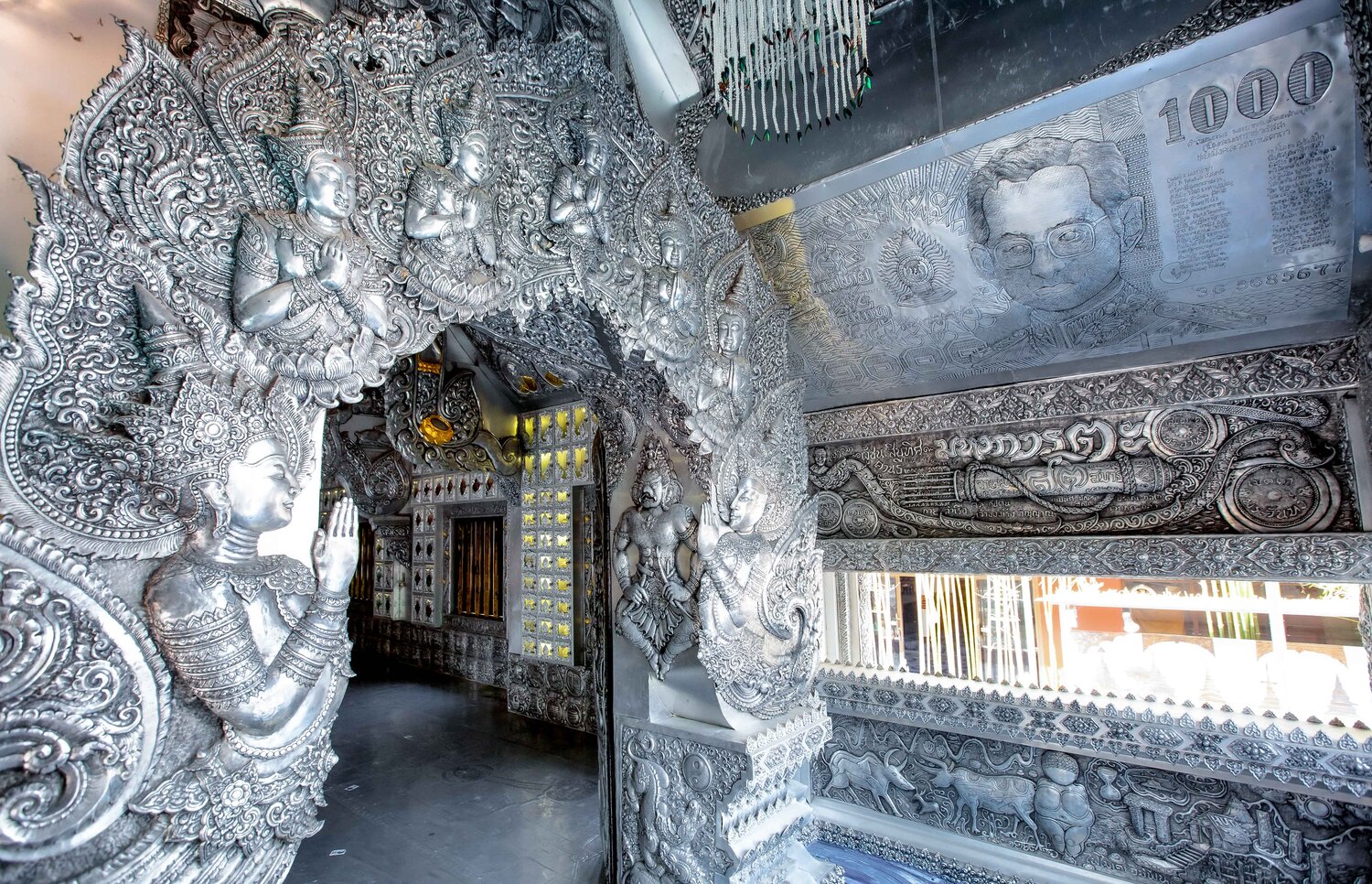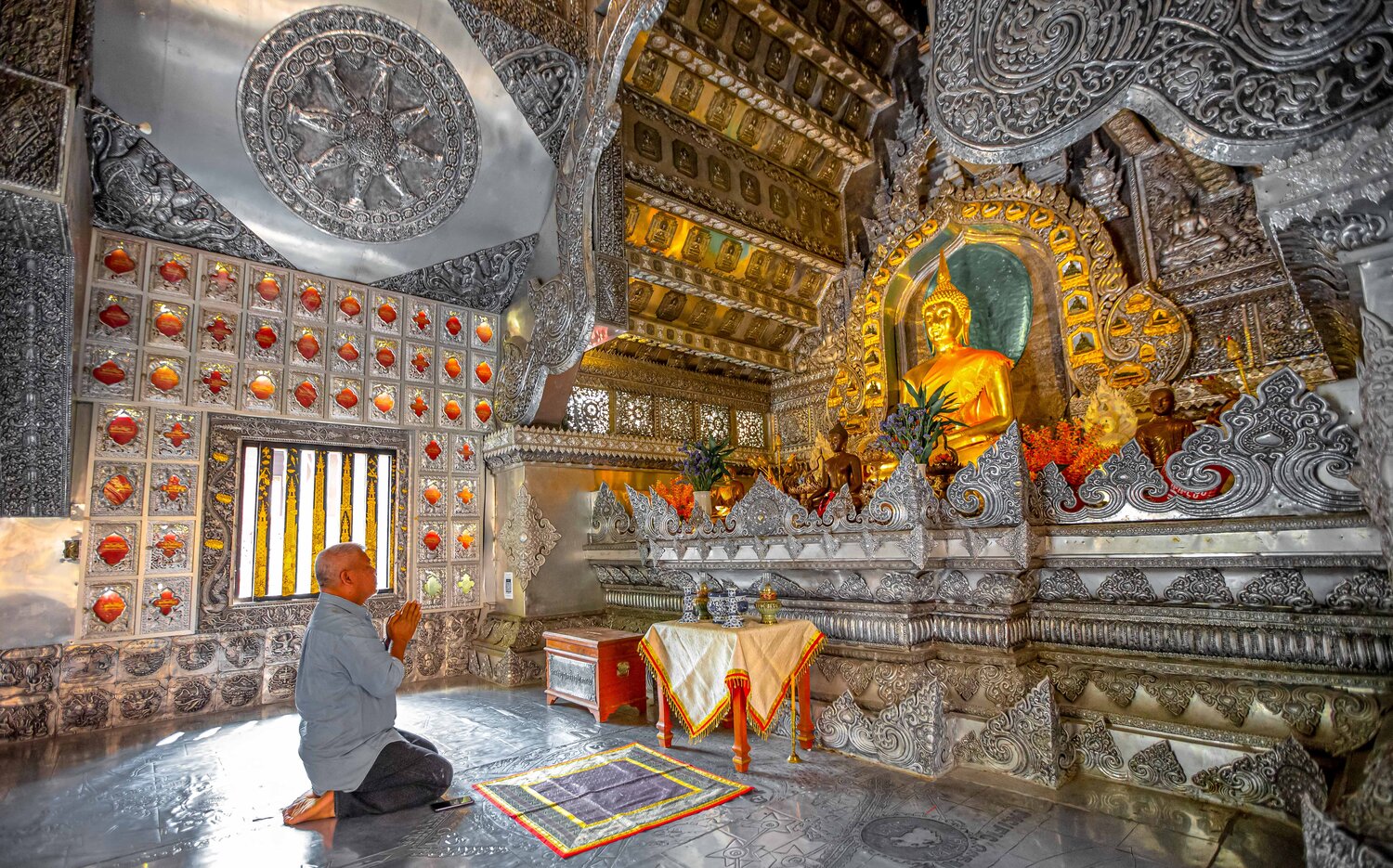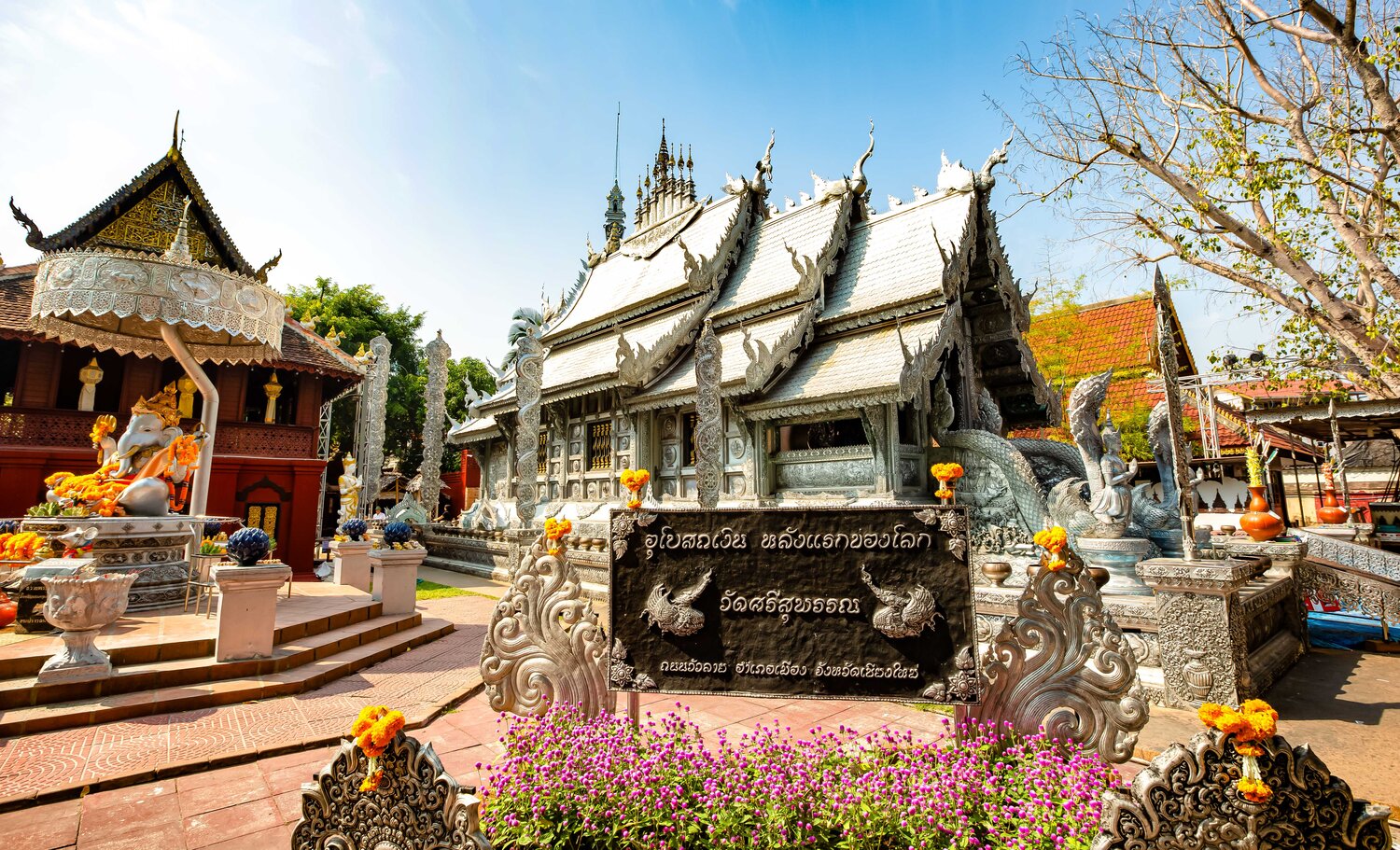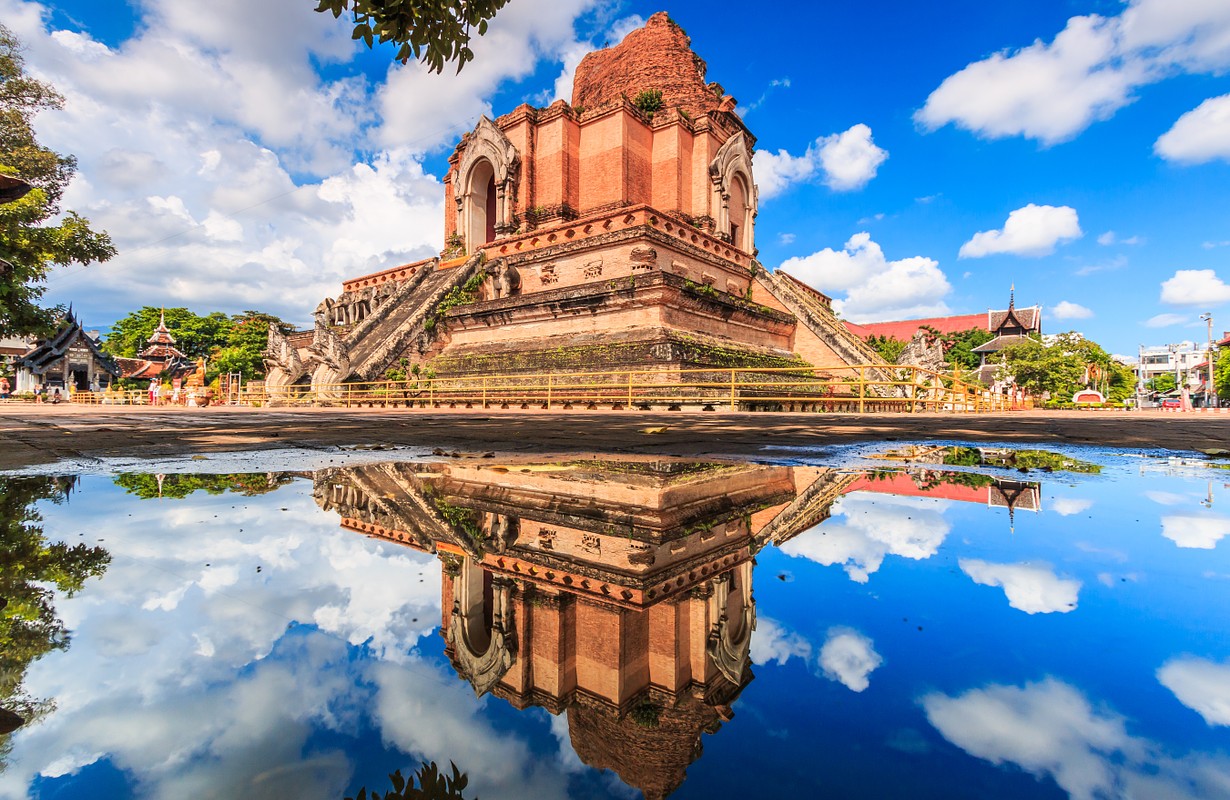
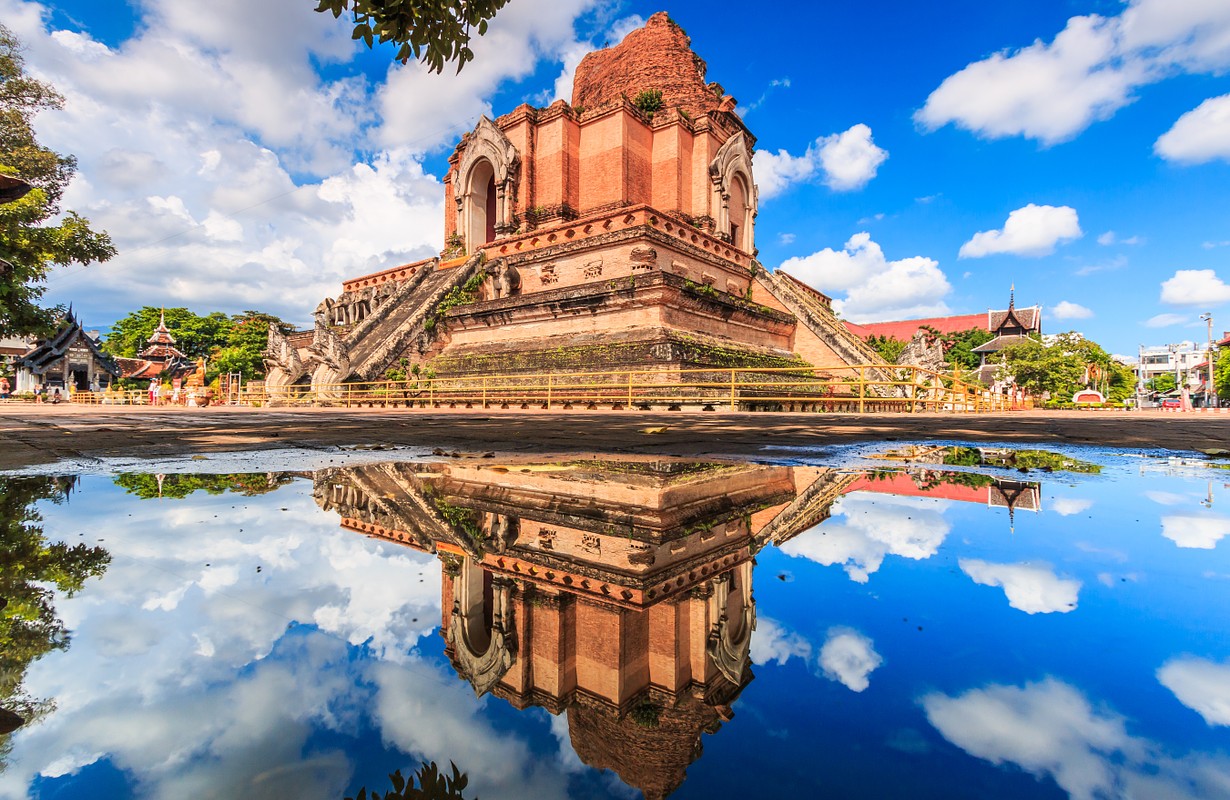
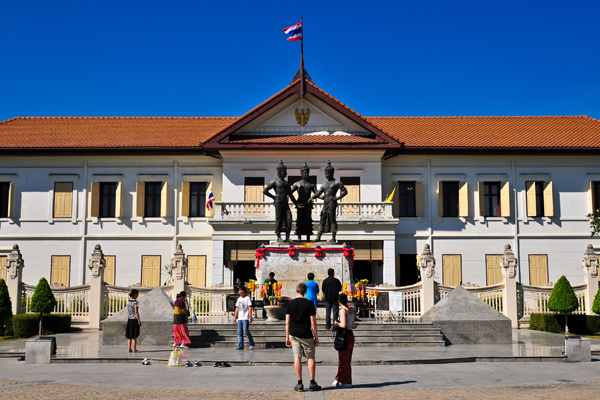
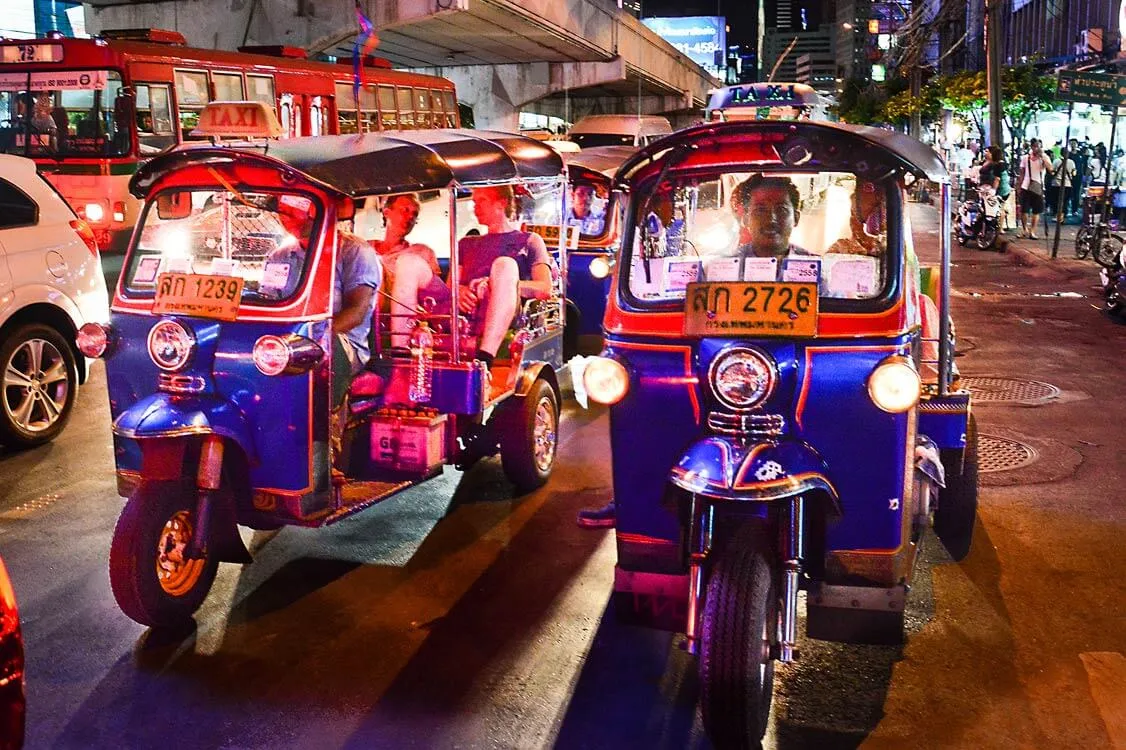 Overview If you want to get a real sense of Chiang Mai, a visit to the Old City is a must! It is home to a number of eccentric cafes and restaurants, unique shops, and majestic temples that will leave you in awe! If you want to see the best of this part of Chiang Mai, you can explore it in the most convenient way possible and join this private trip. You’ll hop on a comfortable and fancy tuk-tuk ride, making you feel like a real local while traveling around the city. You’ll then visit a number of breathtaking temples including Wat Sri Suphan, Wat Chedi Luang, Wat Phra Singh Woramahawihan, Three Kings Monument, Tha Phae Gate, Mueang Mai Market or Warorot Market. Experience the most convenient tour ever with their hotel pick and drop off service, a perfect way to avoid the busy crowds. Book now and tour the amazing Chiang Mai
Overview If you want to get a real sense of Chiang Mai, a visit to the Old City is a must! It is home to a number of eccentric cafes and restaurants, unique shops, and majestic temples that will leave you in awe! If you want to see the best of this part of Chiang Mai, you can explore it in the most convenient way possible and join this private trip. You’ll hop on a comfortable and fancy tuk-tuk ride, making you feel like a real local while traveling around the city. You’ll then visit a number of breathtaking temples including Wat Sri Suphan, Wat Chedi Luang, Wat Phra Singh Woramahawihan, Three Kings Monument, Tha Phae Gate, Mueang Mai Market or Warorot Market. Experience the most convenient tour ever with their hotel pick and drop off service, a perfect way to avoid the busy crowds. Book now and tour the amazing Chiang Mai
WAT SRISUPHAN: CHIANG MAI’S SILVER TEMPLE
To the south of Chiang Mai’s walled Old Town lies the traditional silver-making district of the city. Centring on Wualai Road, this area is dotted with silver shops, but is probably best known to tourists as the location of the Saturday Walking Street Market, the smaller version of the excellent sunday market that sets up each weekend in Chiang Mai. But what many of the shoppers may not realise is that a small lane off Wualai Road leads to one of the most unusual temples in northern Thailand.
Wat Chedi Luang
Wat Chedi Luang lit. temple of the big stupa or temple of the royal stupa) is a Buddhist temple in the historic centre of Chiang Mai, Thailand. The current temple grounds were originally made up of three temples — Wat Chedi Luang, Wat Ho Tham and Wat Sukmin.
History
The construction of the temple started in the 14th century, when King Saen Muang Ma planned to bury the ashes of his father in the place. After 10 years of building time it was left unfinished, later to be continued after the death of the king by his widow. Probably due to stability problems it took until the mid-15th century to be finished during the reign of king Tilokaraj. It was then 82 m high and had a base diameter of 54 m, at that time the largest building of all Lanna. In 1468, the Emerald Buddha was installed in the eastern niche. In 1545, the upper 30 m of the structure collapsed after an earthquake, and shortly thereafter, in 1551, the Emerald Buddha was moved to Luang Prabang.
In the early 1990s the chedi was reconstructed, financed by UNESCO and the Japanese government. However the result is somewhat controversial, as some claim the new elements are in Central Thai style, not Lanna style. For the 600th anniversary of the chedi in 1995, a copy of the Emerald Buddha made from black jade was placed in the reconstructed eastern niche. The icon is named official Phra Phut Chaloem Sirirat, but is commonly known as Phra Yok.
Three Kings Monument
Three Kings Monumnet
Description
The Three Kings Monument stands majestically in front of the old town hall. Phra Pok Klao Road And is a place where Chiang Mai people or tourists come to worship. Three Kings Monument If we turn to the monument, we will find that the middle one is Phaya Mangrai, the right one is Phaya Ruang, and the left one is Phaya Ngam Muang. These three kings are regarded as the creators of the Lanna kingdom. and Nopburi, Si Nakhon Ping, Chiang Mai to be prosperous for more than 700 years. It is considered a monument of historical value. Which can be considered as the symbol of the city of Chiang Mai that has it all. behind the monument Now it is the Chiang Mai City Arts and Cultural Center. which exhibits the history and interesting stories of Chiang Mai It’s good to come and collect information first. It’s called a warm-up for walking around Chiang Mai.
History
The Three Kings Monument or commonly known as Three Kings Monument Located in the heart of Chiang Mai Adjacent to Chiang Mai City Arts and Cultural Center (Old City Hall, Chiang Mai) and Wat Inthakhin Nauemuang The Three Kings Monument was built to commemorate the three kings who built Chiang Mai today, namely Phaya Mengrai (Mengrai), the first king of the Mangrai dynasty. who gathered provinces and cities into the Lanna Thai kingdom and Phaya Ngam Muang and Phaya Ruang (Phor Khun Ramkhamhaeng the Great), the three kings made an oath to drink water mixed with blood from the finger of his hand. to be a close friend When King Mangrai had built the city of Chiang Rai Later he found Chaiyaphum, an auspicious city. It is a plain along the Ping River with Doi Suthep Mountain. Invite the two friends to come to consult and agree to build a city together. “Nopburi, Srinakorn Ping, Chiang Mai” In 1983, the people of Chiang Mai joined together to build the Three Kings Monument or the Three Kings Monument. This is in remembrance of His Majesty’s grace for a long time. Cast in brass and black copper It is half the size, with a height of 2.70 meters, designed and cast by Ajarn Kaimook Chuto. The location of the Three Kings Monument is regarded as The center of Chiang Mai city In front of the monument, there is a large courtyard called “Khuang Three Kings” or “Khuang Three Kings Monument”.
=More information
The Three Kings Monument was built to commemorate the three kings. When looking for Chaiyaphum to build Nopburi, Si Nakhon Ping, the capital of the Lanna Kingdom, Phaya Mangrai the Great King of the Lanna Kingdom with two friends of King Ramkhamhaeng The Great King of Sukhothai and Phaya Ngam Muang The three kings of Phu Kam Yao drank vows at the river Ing. that they would not invade the city against each other The Three Kings, cast in bronze and black brass, are half the size of His Majesty, actually revered by Chiang Mai residents and tourists alike.
History of the Three Kings
Phaya Ruang (Phor Khun Ramkhamhaeng the Great), the King of the Sukhothai Kingdom, was the third son of King Sri Inthrathit He was very powerful when he was 19 years old. He did Iuhatthi defeating Khun Sam Chon Chao Muang Chod, appearing with great honor and being afraid of all the cities. At that time, he ruled the country and the kingdom. people to receive peace and happiness for all And he invented the Thai alphabet in 1826, which is still used to this day. He reigned around 1822 and died around 1842.
Phaya Ngam Muang was born in the year of 1781. He ruled Phayao after his father, Phaya Mingmuang in 1801. When he was young, he studied art and science together with the same teacher’s office as Phaya Mengrai. Therefore, he has been a close friend since then. He is always powerful equal in governing the country He used his wisdom to make friends with neighboring kingdoms. The city has always been peaceful and happy.
The three kings He made an oath of allegiance and drank water from his fingertips mixed with blood. to be friendly The waters vowed not to be hostile to each other on the banks of the Ing River. Phayao City When King Mangrai built the city of Chiang Rai Later, he built the city of Fang and hit the city of Hariphunchai from Phaya Yiba to build Wiang Kum Kam, which is currently in the Saraphi district. After he found Chaiyaphum Muang, which is the seven auspicious blessings, along the Ping River and Doi Suthep, Phaya Mangrai therefore invited his companions, Phaya Ruang and Phaya Ngam Muang, to come and discuss. Set up a sacred ceremony to bury the city pillar vision On Thursday, the full moon of the 6th lunar month, 1839, on the auspicious day of the 16th lunar month, when the trumpet is nearing dawn, the ascendant in Rasri Min Apothat It was completed in the same year as this new city. Nopburi, Si Nakhon Ping, Mueang Chiang Mai which is Chiang Mai, the land of Lanna Thai nowadays
When it comes to this kind of thing, I’m not really your average tourist.Sure, I’ll check out some of the most popular wats, but I’m also going to reserve some of my time to check out some of the obscure ones too.And you’ll have to forgive me if I’m wrong, but I don’t think there are any that are more obscure than Wat Sri Suphan, more commonly referred to as Chiang Mai’s Silver Temple.
You’re not likely to find any other places of worship in the area that look like they’ve been covered in layers of tinfoil and have your favourite Marvel superheroes etched on the walls.
Before I start though, its likely that some readers will feel somewhat overwhelmed with all the local terms that you’ll come across below. If thats the case, never fear, there’s a helpful glossary of terms that should help explain what you’ll find at Chiang Mai’s places of worship. The Haiya (หายยา) subdistrict, located just south of Chiang Mai’s historic quarter is a residential area that is known for its traditional silver workshops, which produce and sell artisan jewelry and ornaments.
When you build a temple in a neighbourhood famed for its silver craftsmanship, it probably only makes sense that you show off what you’re best known for, right?
Well, that wasn’t always the case.
Wat Sri Suphan was originally established in 1502 during the reign of King Mueangkaeo of the Lanna Kingdom’s Mangrai Dynasty.
In the five centuries since, the wat has been rebuilt on several occasions, leaving very little evidence of the original.
Before I go into much detail about the temple, I think it’s important to note that while “Wat Sri Suphan” is generally referred to as “The Silver Temple” in English, the “silver” part is actually only a small piece of a large complex that includes a much larger viharn (worship hall), residences and some other buildings.
The silver ubosot (ordination hall) part of the complex, which has become Wat Sri Suphan’s claim to fame in recent years, is a recent addition and was actually only completed in 2004.
What I’m getting at here is that while locals refer to this place of worship by its formal name, tourists are almost always going to call it, “The Silver Temple.”
It probably doesn’t really matter what tourists call it in English, but I think in some cases (admittedly I was originally under this impression too) people come looking for the Silver Ubosot and leave completely unaware of the actual historic and (arguably) more important parts of the temple.
Wat Sri Suphan Viharn The grand viharn may not be as snazzy or attractive as the Silver Ubosot next door, but that doesn’t change the fact that it is the most significant building at Wat Sri Suphan and dates back more than two centuries, making it the oldest building on site.
The sad thing about this is that it is often overlooked by tourists who know very little about it (few articles online talk about it) or even bother to check it out while visiting, which is why I’ve elected to talk a little about it before I go into detail about the Silver Temple.
The large Lanna-style viharn features an impressive overlapping four-tiered roof with “Naga” serpents along the gables and “Garuda” chofas at the apex of each of the four tiers.
The building doesn’t have a hint of silver on the exterior and is instead a beautiful mixture of gold and red with an umbrella finial at the top.
The entrance is guarded by two of the most impressive naga serpents (that I saw while) in Chiang Mai with some green-skinned Yaksa guardians standing behind them.
Similar to the exterior, the interior of the building is finished almost entirely in red with only the upper parts of the walls, window shutters and columns decorated with golden patterns.
View fullsize
Tour Included
-
Hotel pick up and drop off within 5km radius of Chiang Mai Old City
-
Travel accident insurance
-
Half day tour in a tuk tuk
-
English speaking guide
-
Entrance fees (90THB
-
Pickup details • You can also get picked up from your hotel in Chiang Mai town.
-
The exact pick-up time will be confirmed by email after you have made the booking.
-
Please plan to meet your driver at your hotel lobby at least 10 minutes prior to the sc Read more
Duration Private Tour Moring Aftenoon Price 1,500 baht per/person 09.30-12.00 13.30-16 .00
